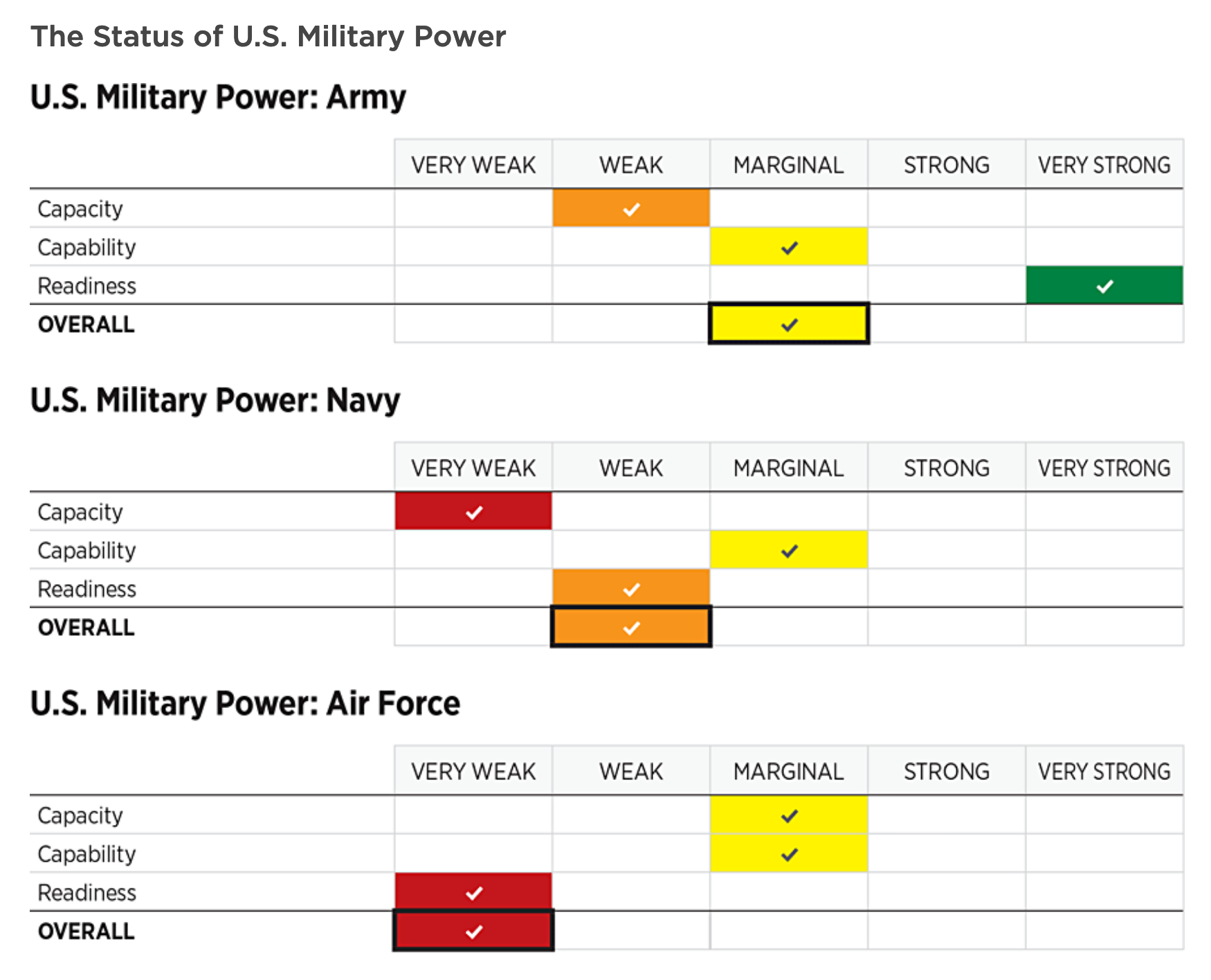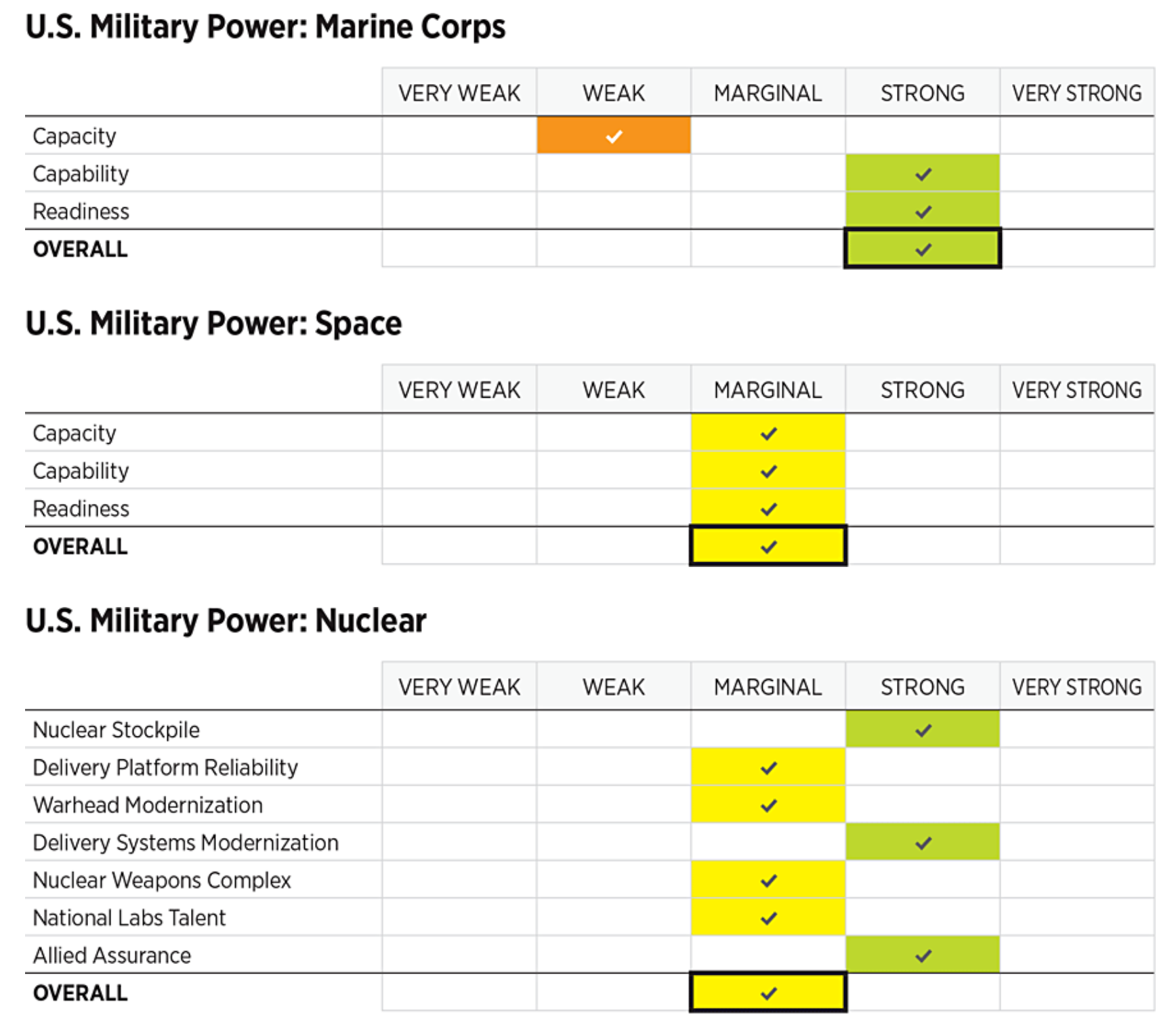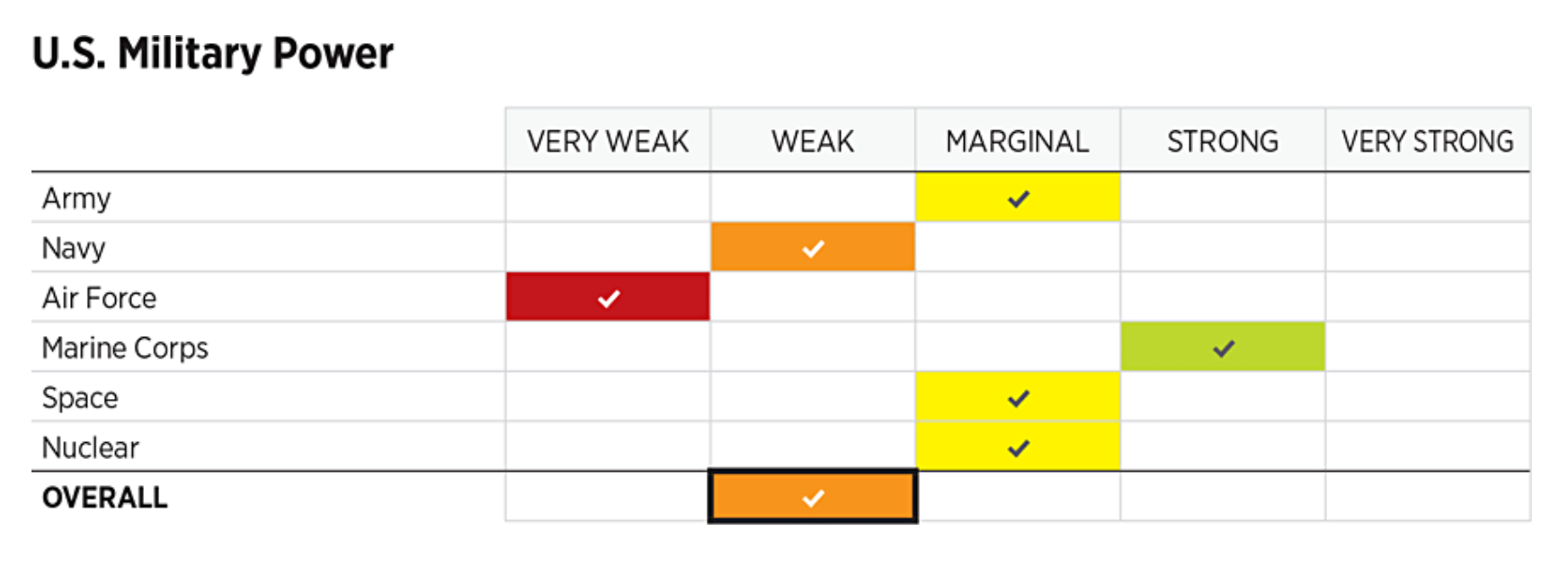
The Heritage Foundation has released its 2024 Index of U.S. Military Strength, a comprehensive annual assessment that offers a detailed analysis of the United States military's ability to protect national interests.
The Heritage Foundation has released its 2024 Index of U.S. Military Strength, a comprehensive annual assessment that offers a detailed analysis of the United States military's ability to protect national interests. This report, released on January 24, 2024, evaluates the military’s current posture and its capacity to execute missions in today's global security environment.

The sobering conclusion drawn from the report is that the U.S. military is at significant risk of not being able to defend America’s vital national interests, an outcome attributed to a confluence of factors including prolonged deployments, underfunding, poorly defined priorities, shifting security policies, and a lack of discipline in program execution.

The Index examines the ease of operating in key regions, the threats to U.S. vital interests, and the condition of the U.S. military’s power, using a framework that judges capability, capacity, and readiness for operations.
Three vital interests are consistently highlighted:
The report suggests that to defend these interests effectively, the U.S. requires a military force capable of engaging in two major conflicts simultaneously, echoing the need for a "two-war" capacity.
The Index assesses the global operating environment as "favorable" but highlights the complexities and challenges in Europe, the Middle East, and Asia. It specifically notes the strain on European allies due to Russia's war in Ukraine, the destabilizing effects of Iran’s actions in the Middle East, and the tensions in Asia due to China's assertiveness and North Korea's continued provocation.
The threat environment is assessed as "aggressive" for threat actor behavior and "formidable" for the ability to harm U.S. interests, with particular concern over China's military expansion and Russia's aggression in Ukraine.
The Index offers a service-by-service assessment:



The cumulative rating for the U.S. military is "Weak," underlining that the current forces might struggle with a single major regional conflict and are ill-equipped for two. The report warns that the military services continue to face challenges in modernization, recruitment, and readiness.
In conclusion, the 2024 Index stresses the urgency for consistent investment in rebuilding the U.S. military to ensure that it is properly sized, equipped, trained, and ready to fulfill national defense missions. As threats continue to emerge with regularity and complexity, the report underscores the importance of serious and consistent investment in the nation’s security by national leaders and the American public.